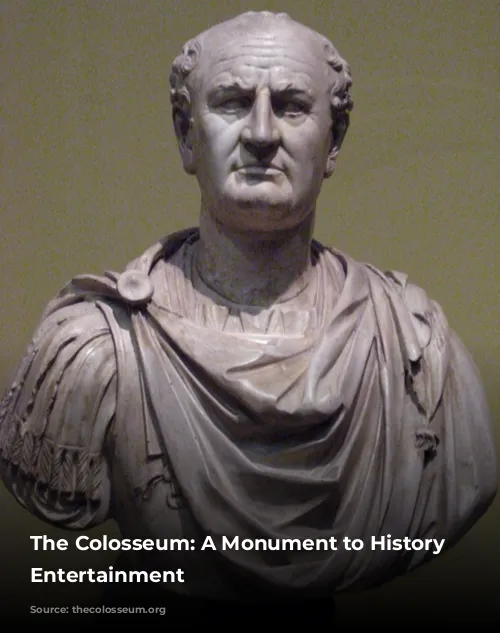The Colosseum is a timeless landmark that stands as a powerful reminder of ancient Rome’s grandeur and the power of entertainment. Constructed nearly 2,000 years ago, its history is deeply interwoven with the rise and fall of the Roman Empire. This iconic structure witnessed a myriad of events, from gladiator battles to spectacular hunts and even gruesome executions.
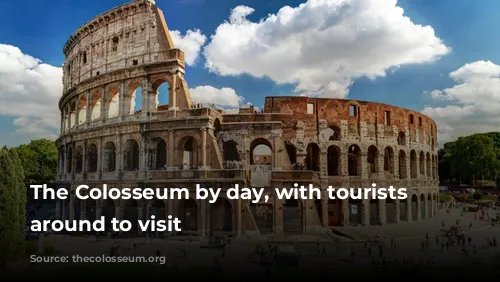
A Monument to Construction and Labor
Construction of the Colosseum began in 72 AD and was completed just eight years later in 80 AD. The project was initiated by Emperor Vespasian, but tragically, he died before its completion. Thankfully, his sons, Titus and Domitian, continued their father’s vision, overseeing the final phases of construction. The labor force was primarily composed of Jewish slaves, overseen by skilled Roman engineers and craftsmen.
The magnitude of the labor involved in the Colosseum’s construction was truly remarkable. After the first Jewish-Roman war, a significant portion of the Jewish population was enslaved, with estimates suggesting that 60,000 to 100,000 individuals were employed in building this majestic structure.
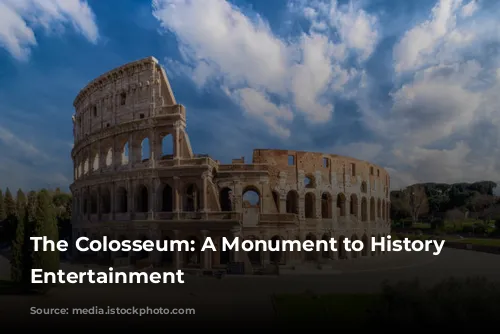
The Colosseum’s Origin Story: A Tale of Fire, Politics, and Entertainment
The Colosseum’s creation is entwined with the Great Fire of 64 AD. This catastrophic event, which ravaged a large portion of Rome, prompted Emperor Nero to construct a magnificent palace, the Domus Aurea, for himself. However, this decision angered the Roman citizens. When Nero was overthrown and Vespasian ascended the throne, he sought to appease the people. He demolished Nero’s palace complex and ordered the construction of the Colosseum atop the site of an artificial lake.
The Colosseum was intended to be a grand amphitheater where all Roman citizens could enjoy entertainment. It was a symbol of the new era, one that aimed to unite the people after a period of turmoil.
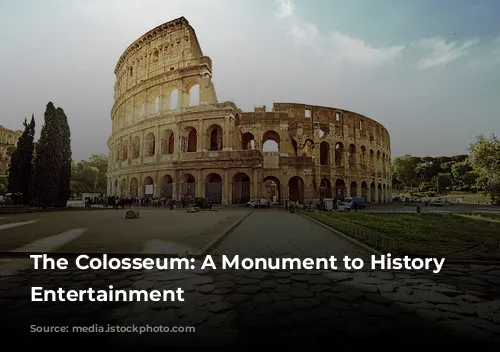
Naming the Colosseum: A Tale of Flavian Dynasty and Bronze Statues
The Colosseum’s original name was the Flavian Amphitheater, a tribute to its builders, the Flavian emperors. However, the name “Colosseum” likely originated from the colossal bronze statue of Emperor Nero that once stood next to the building. This statue, itself inspired by the Colossus of Rhodes, was a testament to Nero’s ambition and grandeur.
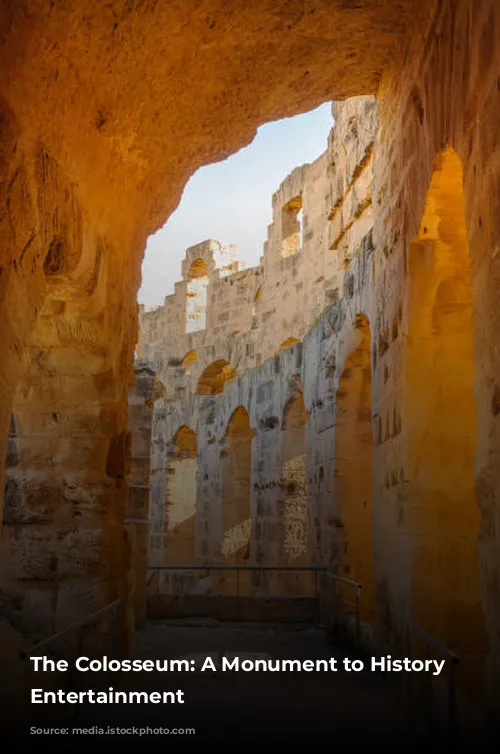
The Colosseum: A Architectural Marvel
The Colosseum’s impressive dimensions are a testament to its scale and grandeur. It is oval-shaped, measuring 189 meters long, 156 meters wide, and 48.5 meters tall. This colossal structure boasts a surface area of 6 acres!
The Colosseum’s outer walls are adorned with three tiers of columns, each level featuring 80 arches, a total of 240 arches. These arches served a practical purpose as well as a decorative one. They were numbered with Roman numerals to guide citizens to their designated seating areas.
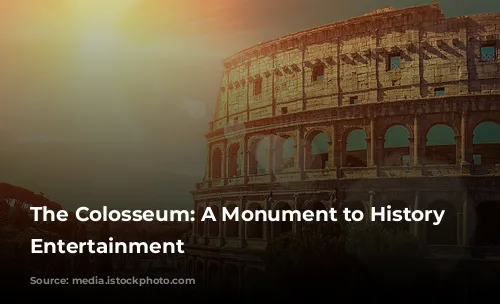
A Symphony of Stone and Iron
The Colosseum was built using an estimated 100,000 cubic meters of travertine stone, sourced from the nearby quarries of Tivoli. This stone was meticulously joined together by thousands of iron clamps, a testament to the ingenuity of Roman construction techniques.
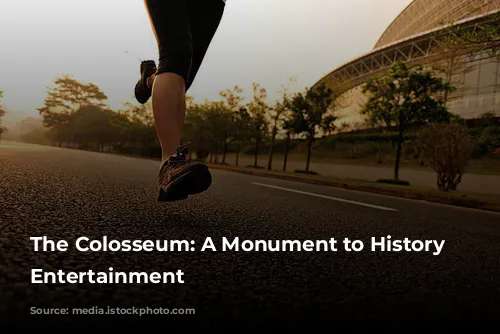
Secrets Beneath the Colosseum: The Hypogeum
The Hypogeum, which translates to “underground,” is an intricate network of tunnels and chambers located beneath the Colosseum. This subterranean area served as a holding pen for gladiators, animals, and prisoners before their entry into the arena. The Hypogeum was connected to the arena by 80 vertical shafts, providing an efficient means of access. Additionally, an extensive network of trapdoors enabled the deployment of scenery elements during the spectacles.
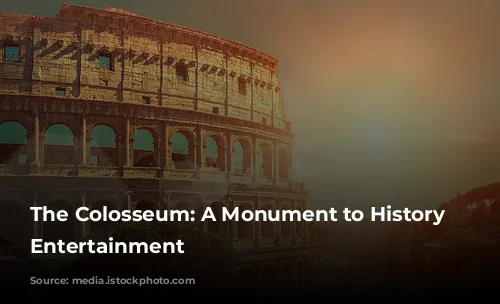
A Sea of Spectators: The Colosseum’s Capacity
The Colosseum could accommodate a staggering 50,000 to 80,000 spectators, making it one of the largest arenas ever built. The sheer number of attendees speaks to the popularity of the events held within its walls and the immense scale of Roman entertainment.
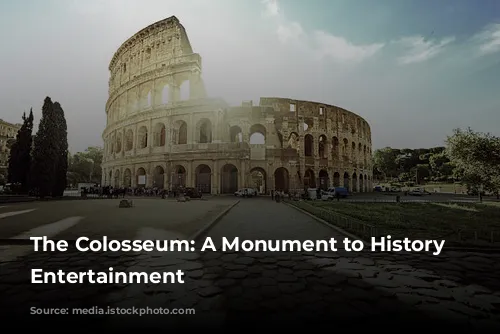
A Glimpse into the Colosseum’s Dark Side: The Toll of Entertainment
While the Colosseum was a beacon of entertainment for the Romans, it also bore witness to a darker side. It is estimated that as many as 400,000 individuals, including gladiators, slaves, convicts, prisoners, and entertainers, perished within its walls over 350 years of bloodsports and spectacles.
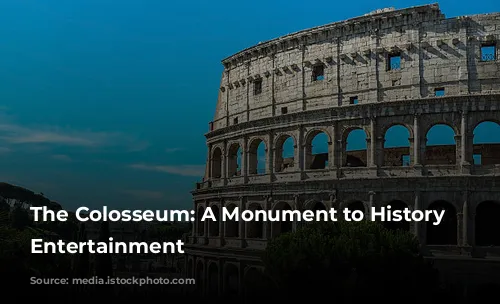
The Colosseum’s Menagerie: A Diverse Array of Animals
The Colosseum played host to a diverse array of animals, many of which were used in staged hunts. These hunts involved armed and trained humans battling against dangerous creatures. Other animals served as “executioners,” fulfilling gruesome punishments.
Lions, tigers, wolves, bears, leopards, wild boar, elephants, hyenas, buffalo, hippopotamus, crocodiles, and even giraffes were all seen within the Colosseum’s walls at some point in its history. The sheer number of animals utilized in these spectacles is staggering. It is estimated that millions of animals met their demise in the Colosseum, a grim reminder of the Roman appetite for entertainment.
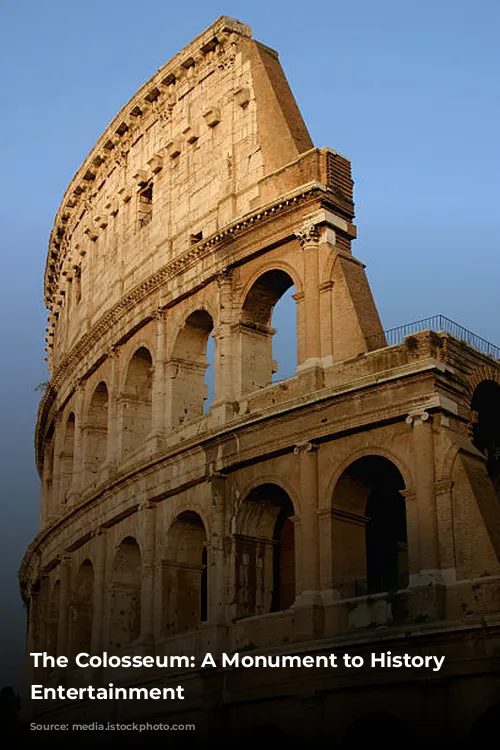
The Colosseum’s Spectacles: A Feast for the Senses
The most well-known spectacles held within the Colosseum were gladiator battles. These gladiatorial contests, reminiscent of modern-day boxing matches, were a staple of Roman entertainment.
Hunts involving wild animals, executions, and even staged naval battles (Naumachia), for which the Colosseum was temporarily flooded, were also common events. These spectacles offered a varied feast for the senses, appealing to the Roman desire for thrills and spectacle.
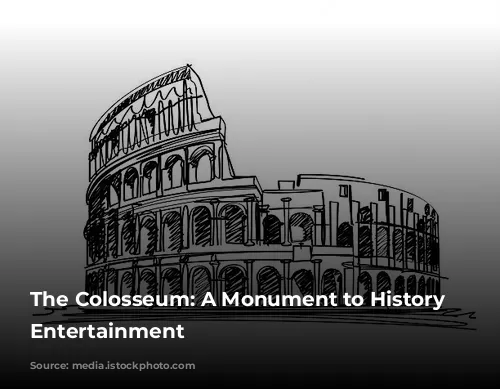
Debunking the Myths: Gladiator Fights and Christian Martyrs
Contrary to popular belief, gladiator fights were not always the bloody free-for-alls depicted in modern-day media. These fights were more structured, with gladiators divided into classes, referees and doctors present, and matches not always ending in death.
While it’s impossible to deny that thousands perished in the Colosseum, there is no conclusive evidence linking Christian martyrs directly to the arena.
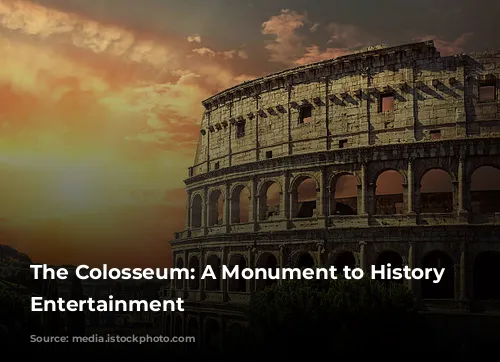
The Colosseum in Cinema: Fact vs. Fiction
The film “Gladiator” presented a compelling story, but some details were embellished. Commodus, the Roman emperor depicted in the film, was a real historical figure known for his love of gladiatorial combat. He even entered the arena himself, but often against handicapped opponents or non-threatening animals, earning him the moniker of a sadist. However, the movie’s dramatic climax of Commodus’s death at the hands of a hero-gladiator did not occur in real life.
Gladiators: Not Just Fighters, But Slaves
Gladiators, while seemingly possessing a certain level of freedom within the arena, were actually members of the infame class, stripped of their rights and treated as property of their owners. They were, essentially, slaves, their lives at the mercy of their masters.
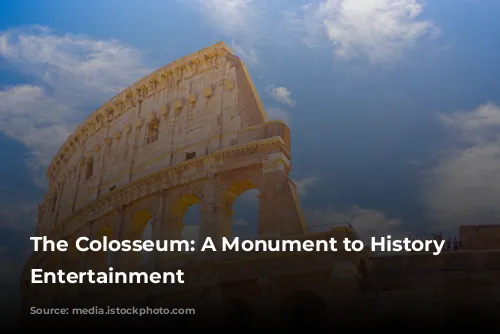
The Colosseum’s Legacy: From Arena to Tourist Attraction
The last recorded gladiator battles took place in 435 AD. While hunts continued for a century after, the Colosseum’s era of bloodsports eventually came to an end.
The Colosseum has faced many challenges throughout its history, including fires and earthquakes, but it has also been resilient, standing as a testament to its durability and cultural significance. After its time as an arena, it has been repurposed as a cemetery, a place of worship, housing, workshops, a religious order’s home, a fortified castle, and, most recently, a popular tourist attraction.
Today, the Colosseum attracts over 7 million visitors annually, solidifying its position as one of the most visited landmarks in the world.
The Colosseum continues to enthrall visitors from around the globe, offering a glimpse into the grandeur and brutality of ancient Rome. Its enduring legacy lies in its ability to connect us to the past, reminding us of the power of entertainment and the enduring spirit of human resilience.
